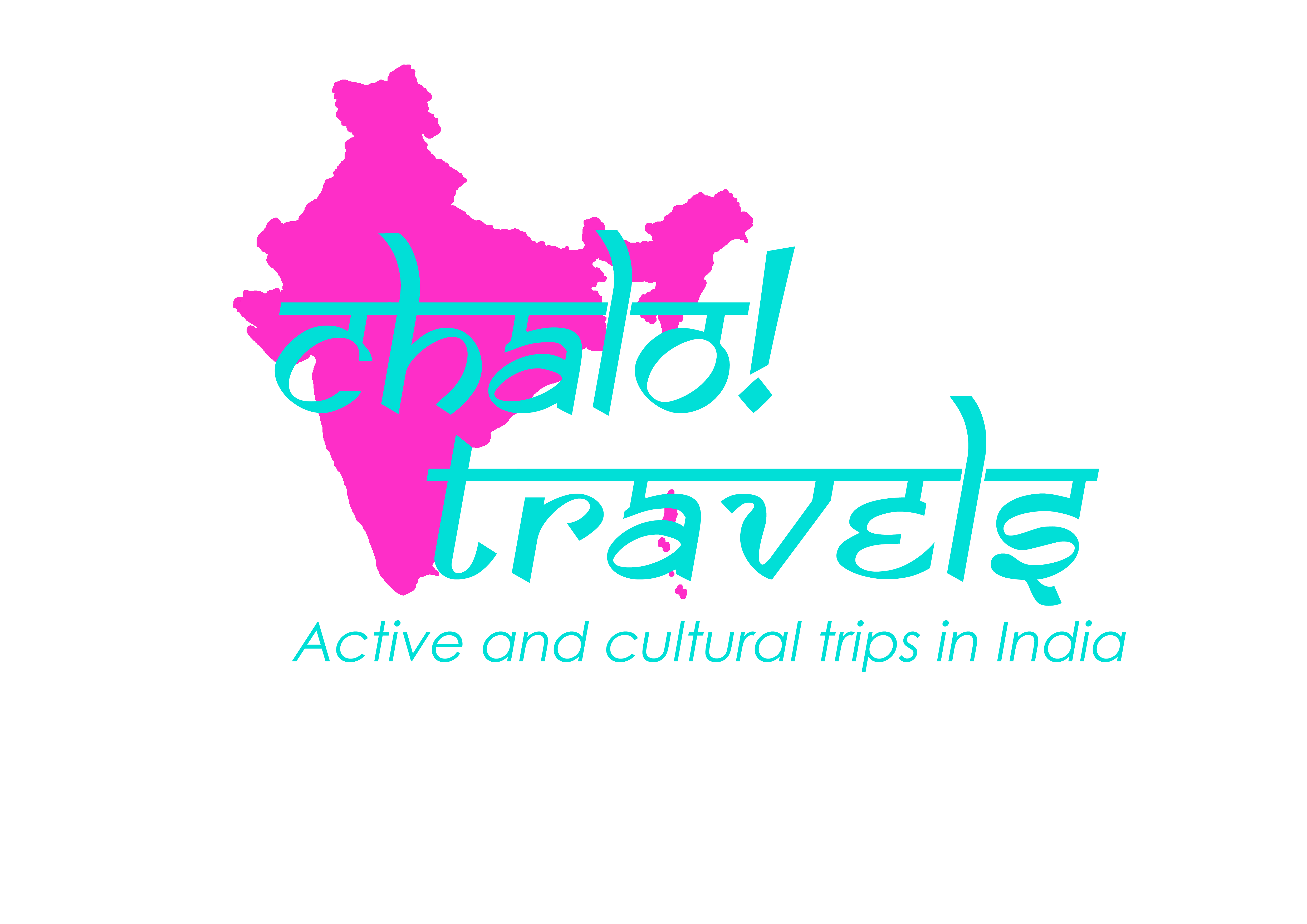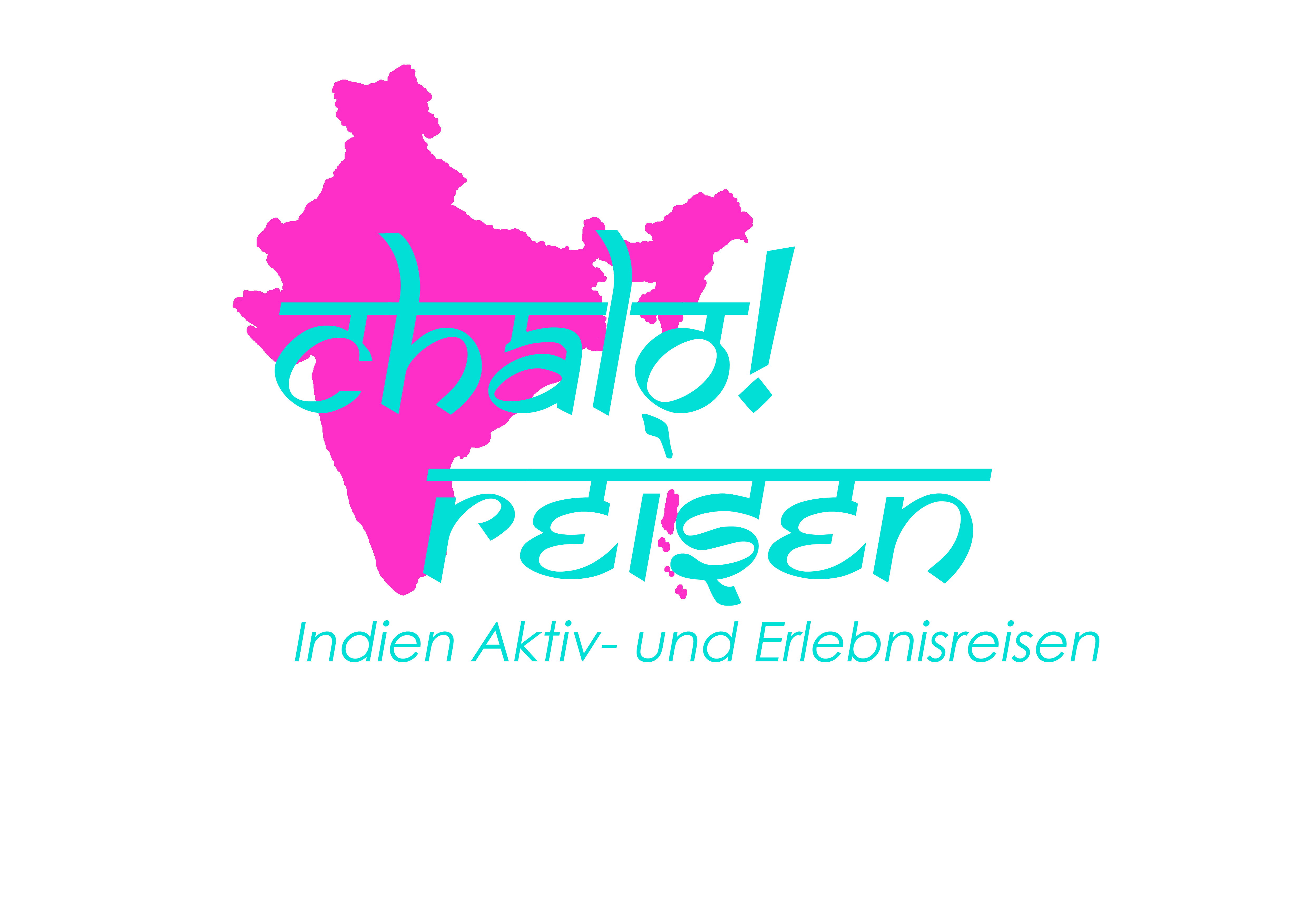- Sport & Abenteuer Reisen
- Yoga & Ayurveda Reisen
- Multi Aktiv Reisen
- Yoga Reisen
- Trekking Reisen
Overview
Nepal is unlike any other country. It is a natural mandala in the middle of the Himalayan mountains. Conveniently nestled between China and India and home to the world’s highest peaks (Mount Everest), Nepal has been attracting spiritual seekers for centuries.
Yoga practitioners from all over the world come to Nepal to explore, expand and experience the living essence of yoga.
The rich cultures of Buddhism and Hinduism are still at the heart of daily life. It is not difficult to see, feel and touch a living yoga tradition in Nepal.
It is said, that if you practice in places laden with the energy of prayer and meditation, you will find easier to Your Self- such a place is Nepal.
During our 16 days in Nepal, we will practice yoga in the most wonderful and energetic places in Nepal, not only initiating the scenic beauty, but also getting to know the interesting Nepalese culture and its people.
For 7 days we hike through the surroundings of the 5587 m high Mardi Himal.
In the southern Annapurna region lies a small and almost untouched paradise that was only released for tourism a few years ago.
On this trekking tour you can experience the whole fascination “Himalaya” away from the tourist streams. The route runs parallel to the well-developed route to Annapurna Base Camp and offers more pristine landscapes, small Nepalese villages, flourishing rhododendron and magnificent views of the Himalayan mountains. We will stay in small cozy tea houses, where we will also be catered for and sit in the evening in a nice round with other trekkers. In the morning and in the evening we will practice yoga and meditation and during the day we will go on moderate day hikes.
The tour offers the opportunity to climb up to the 4,440 meter high Mardi Himal base camp in a few days and enjoy the perfect view of the highest mountains in the world.
We end the trek in the peaceful Pokhara. From here we continue to our three-day yoga and meditation retreat.
In the middle of the Kathmandu Valley, just 22 km from Kathmandu, our monastery inn is located right next to the peaceful Neydo Tashi Choeling Monastery.
It is the perfect place to relax and meditate before returning to our normal everyday life at home. You can also get to know the life of the monks in a Buddhist monastery and be a part of it yourself.
The monastery is located very close to the Asura cave, where Padmasmbhava meditated and reached Samadhi. The whole area is highly charged and offers a very peaceful atmosphere. In the monastery itself is the largest Amitabha Buddha statue in Nepal.
Nearly 200 monks live here. Even though we have our own retreat structure, you are invited to participate in their meals and exercises.
Program
Day 01 Day Arrival in Kathmandu
You will be greeted by us at the airport and taken to the hotel. Depending on your arrival, there is time to explore the thamel tourist center before we officially start our yoga journey with a welcome yoga class.
For the evening we invite you for dinner in Thamel.
Until then, the day can be spent at will. We recommend simply strolling through the old town of Thamel. If there are still questions of equipment, it is best to clarify them directly at this point.
One night in a hotel, overnight stay with breakfast, 3 stars
Day 02 Kathmandu
Kathmandu offers plenty of cultural attractions and many culinary highlights.
After a morning yoga session, we will visit the three royal cities of Bhaktapur, Patan and Kathmandu with their medieval town centres and their most important Hindu and Buddhist sanctuaries in the Kathmandu Valley. These include, to name but the most important, the World Heritage Site of Pashupatinath and Bodnath. In the evening we close the day with a meditation.
One night in a hotel, overnight stay with breakfast, 3 stars
Day 03 Pokhara, altitude 820 meters, bus 7 hours travel time
Today is the time! Early in the morning after breakfast, take a bus or jeep, together with the porters and guides, from the hotel to Pokhara, the starting point of our yoga trek. The bus ride alone is already an adventure in itself. There is definitely a lot to see!
This night we spend in the beautiful Pokhara. The small town has a lot to offer. You can use the afternoon and evening to explore the old town. If you feel like it, you can also simply relax in a hammock and let the sun shine in your face. Of course, we also offer a yoga class in the afternoon.
One night in a hotel, overnight stay with breakfast (breakfast), 2-3 stars
Day 04 Pothana, altitude 1,900 meters, trekking 5 hours walking time
In the morning, the first day of trekking begins with a 60-minute drive to Kande, to the starting point of the trekking tour. This is where the hike to Pothana begins. The beginning of the Mardi Himal Trek we share with the hikers who do the Annapurna Base Camp. Upon arrival in Pothana we close the first day of trekking with a soothing yoga session.
One night in the lodge/tea house, full board
Day 05 Forest Camp, altitude 2,500 meters, trekking 5 hours walking time
Before we start today’s trek, we first go on the mat: A holistic yoga class with the practice of Asana, Pranayama and Meditation makes us start the day consciously.
Today’s stage leads first through beautiful Rhododendron Forest to Deurali (2,150 m).
Deurali is a small settlement of tea houses with great views of the Annapurna massif in the Himalayas. Here the path separates from the route of the Annapurna Base Camp and it becomes quieter. We continue through dense forest to the Forest Camp, where we will have a nice spot for our yoga practice.
One night in the lodge/tea house, full board
Day 06 Low Camp, altitude 3,000 meters, trekking 3 hours walking time
Slowly we begin to get used to the daily routine of yoga, hiking and yoga and feel how the daily yoga practice, the movement in the fresh air, the healthy food and the grandiose nature show their effects. Today’s stage leads through dense forest with orchids, mosses, tree ferns and lichens.
As the height increases, you will notice that the steps are slowly becoming harder for you. So when your walking speed decreases, that’s normal.
One night in the lodge/tea house, full board
Day 07 High Camp, altitude 3,580 meters, trekking 4 hours walking time
After a short but steep ascent, the tree line is reached and you have a clear view of the mountains in front of you: Mardi Himal (5,587 m), Machapuchare (6,993 m), Annapurna South (7,219 m) and Hiunchuli (6,441 m).
The afternoon is used for an extensive yoga workshop.
One night in the lodge/tea house, full board
Day 08 Daily Stage Mardi Himal Base Camp Altitude 4,440 meters, back to High Camp, Trekking 7 Hours
Today, the 4000-meter mark is broken! The ascent to the Mardi Himal Base Camp is more demanding and longer than the previous stages. The paths are not so well developed and partly quite steep. But with a reasonably good condition and a little caution, this can be done.
We postpone our morning yoga lesson in favor of an early start to View Point so that we can watch the sunrise over the Himalayas. It is worth looking into the night sky on the way, in good weather and clear visibility. The starry sky is gigantic.
You can decide on site whether you want to climb even further or prefer to take a yoga class here. The ascent to Upper View Point takes about 3 hours and the way back to Mardi Himal base camp about 2 more hours.
Whether you went to the View Point or Mardi Himal Base Camp, a warm oven and hot tea and yoga are waiting for you at High Camp.
One night in the lodge/teahouse, full board
Day 09 Siding, altitude 1,900 meters, trekking 7 hours walking time
In order not to go back the same way, we make a small “slingshot” over the village of Sidin. Siding is a traditional Gurung village that is rarely visited by tourists. In the afternoon there is enough time to look around or to take a tour of the village. Of course, today is again framed by two yoga classes.
One night in the lodge/tea house, full board
Day 10 Lwang, altitude 1,550 meters, trekking 5 hours walking time
A beautiful path over the small connecting paths of the local villages leads over fields and rice terraces to the Gurung village of Lwang.
One night in the lodge/tea house, full board
Day 11 Pokhara, altitude 820 meters, trekking 2 hours walking time
Our last yoga ckass during the trekking tour. A short stage leads to Khora Muk. Here the car waits and brings us back to Pokhara. The journey takes about an hour.
The afternoon is free. After the seven-day trek, the return to civilization is really fun! Enjoy this feeling. How about a nice massage?
One night in a hotel, overnight stay with breakfast, 2-3 stars
Day 12 Neydo Tashi Choeling Monastery, bus 7 hours drive
In the morning we take the bus to our monastery, 22 km outside Kathmandu. In the evening we start with our retreat program.
One night in retreat, overnight stay with full board
Day 13 -Day 15 Yoga Retreat at the Buddhist Neydo Tashi Choeling Monastery
Every day we will have a structured process consisting of two yoga classes, yoga theory lessons, meditation, as well as three healthy and delicious meals. In between we have time to welcome the monastery atmosphere in us, relax or take smaller walks. We will also visit the famous Dakshinkali Temple, as well as the meditation cave Padmasambhava’s Cave.
3 nights in retreat, overnight stay with full board
Day 16 Day of departure
It’s time to say goodbye to Nepal. A transfer takes us to the airport (2 hours)
Services
General
- A dinner together to get to know and prepare the tour
- Kathmandu Sightseeing Tour
- All fees and permits for entry to the national parks.
- 7 days Yoga Trek with 2 yoga classes daily
- 2 days Yoga Retreat in the Monastery Inn with daily 2 Yoga classes, Yoga Theory and Meditation
Transfers
- Shuttle service from Kathmandu Airport to your hotel and back
- All trips required for this tour by car, taxi or bus
Accommodation/catering
- Hotel in Kathmandu, 3 star standard
- Hotel in Pokhara, 2-3 star standard
- All nights in the lodges during the trek with breakfast/lunch/dinner “a la carte”
- Monastery guest house during the retreat with full board
Staff
- tour guide and yoga teacher (during trek and retreat)
- trekking Guide
- Insured and well-equipped porters
Not included
DrinksTip for your crew if you liked it
Highlights

Pokara 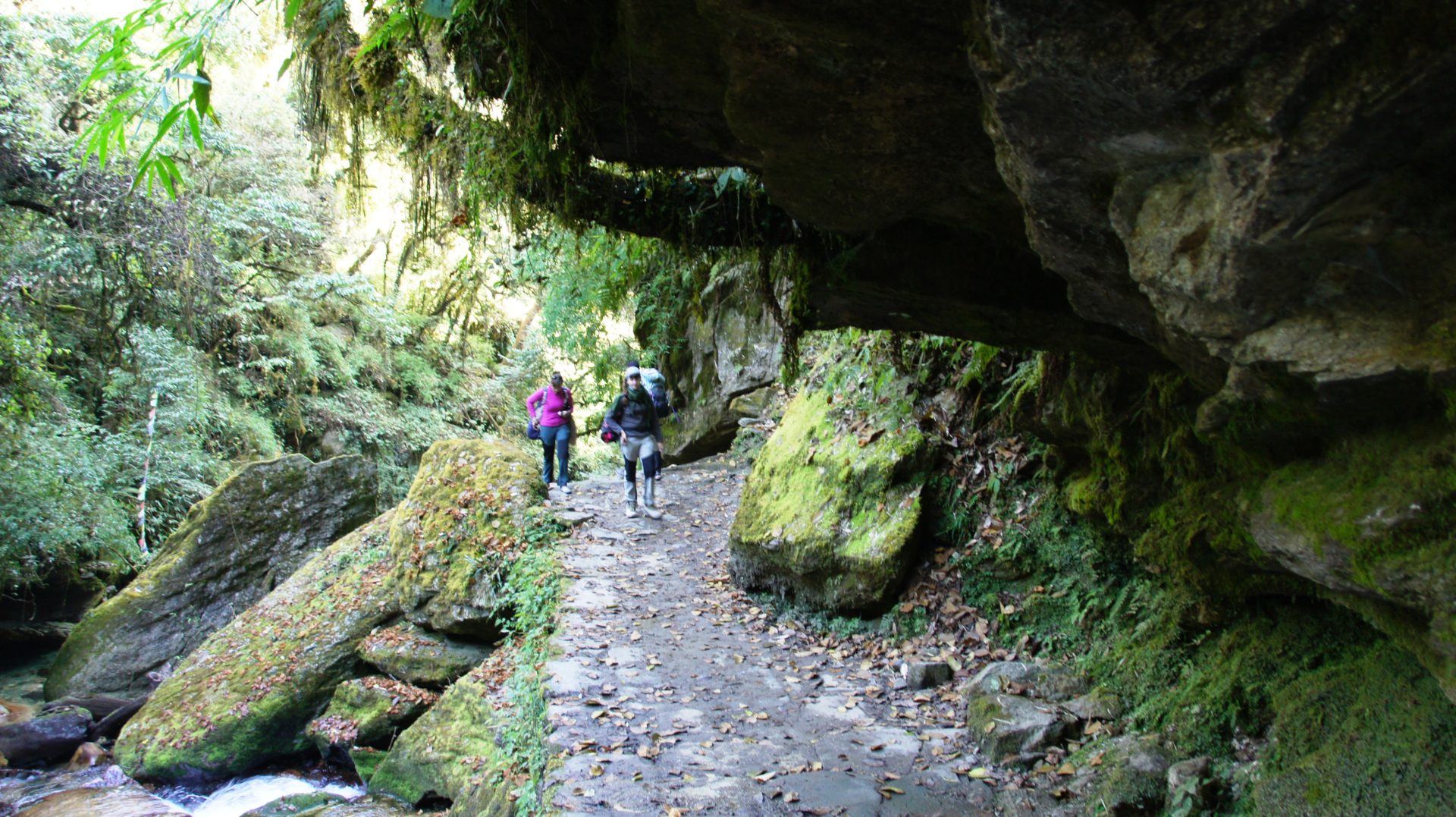
Yoga Trek 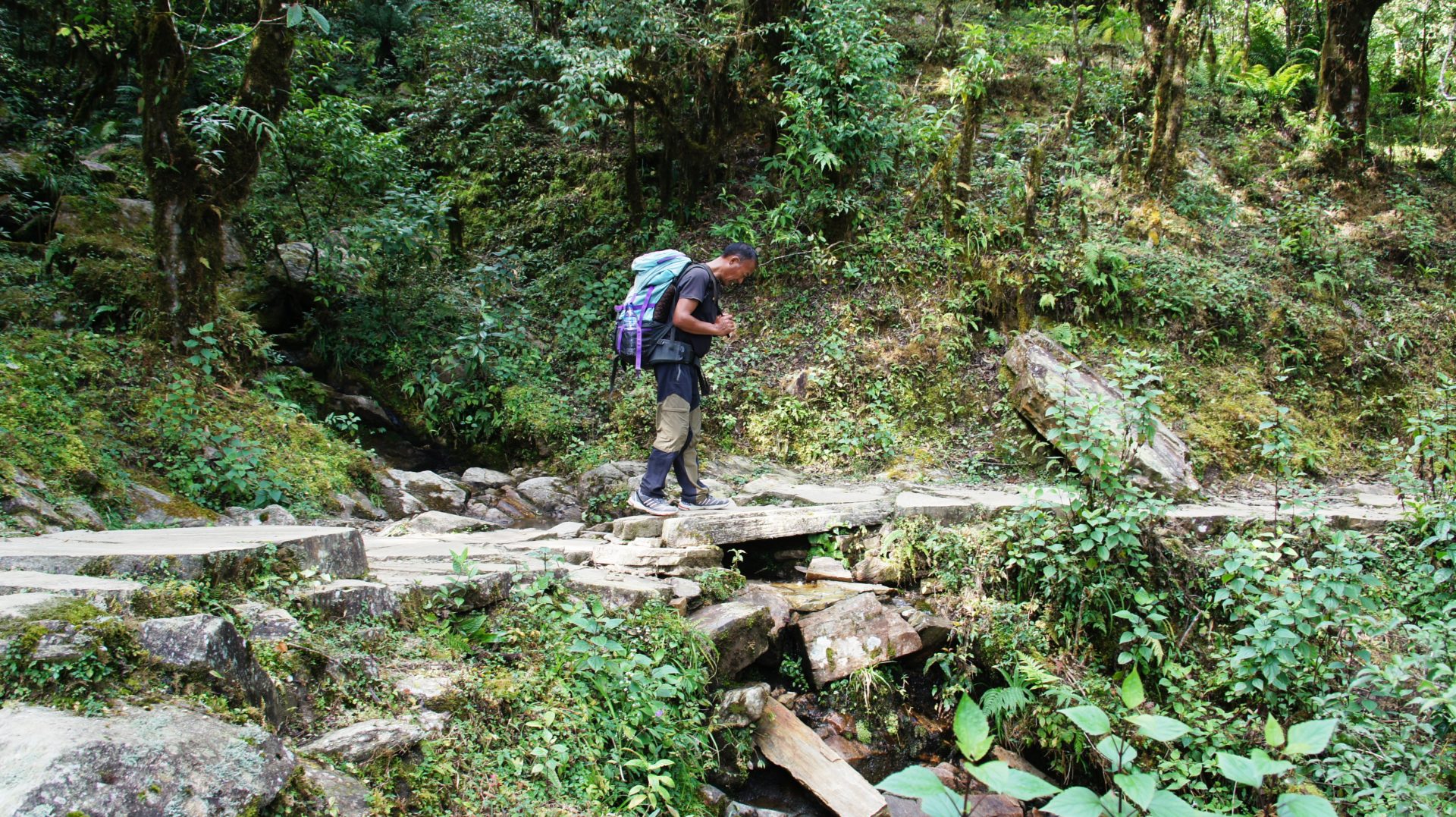
Yoga Trek 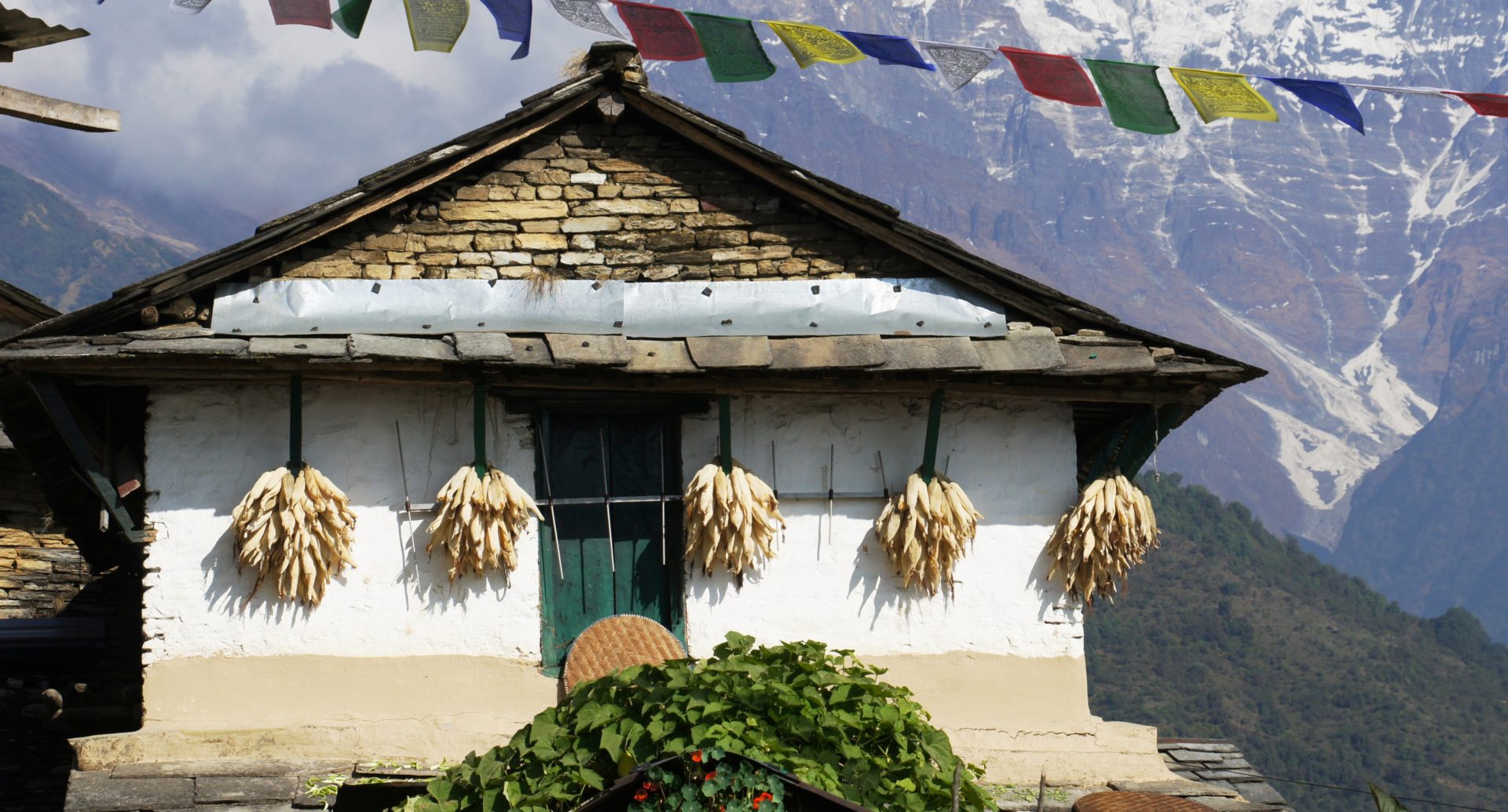
Tea House 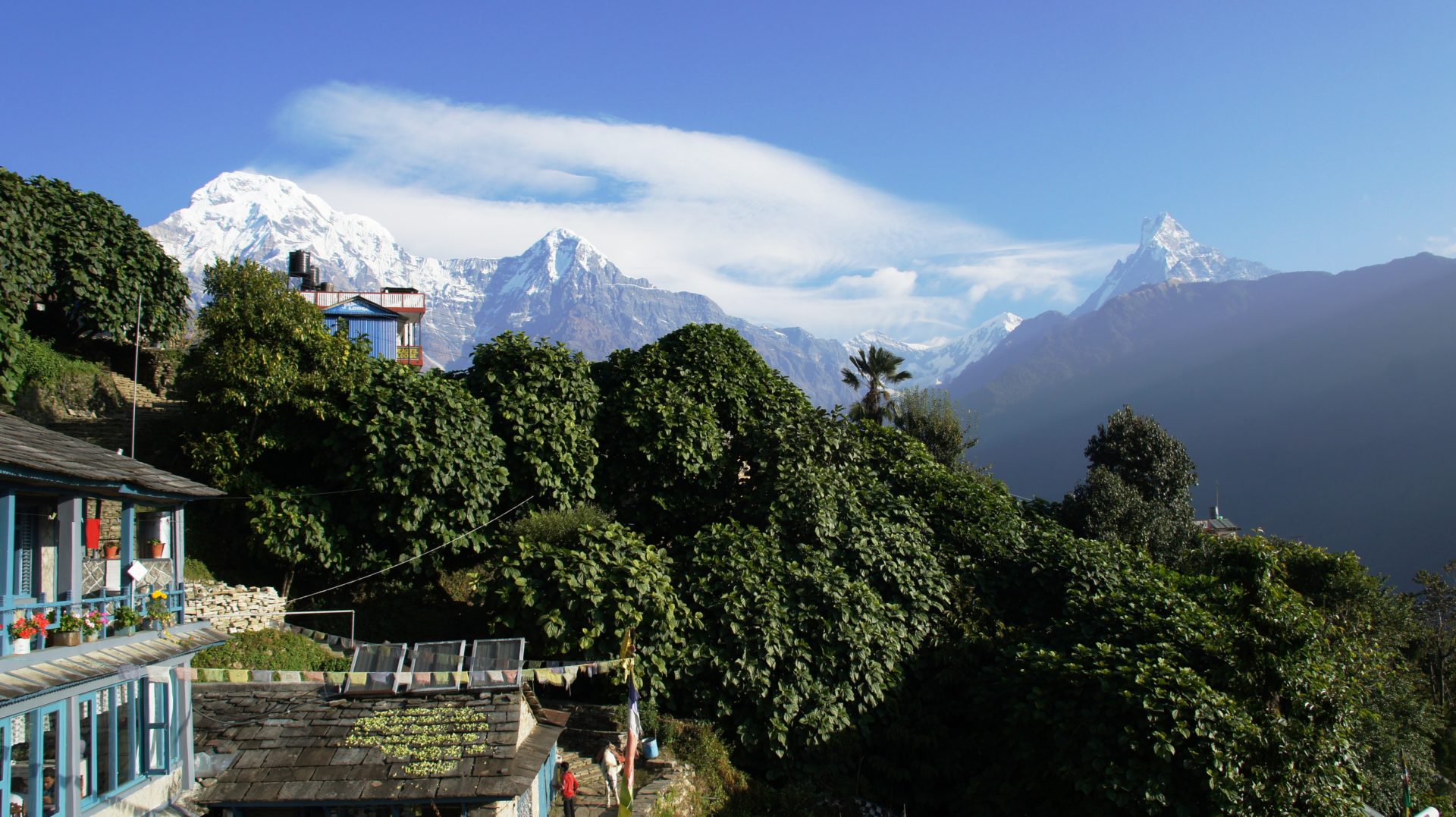
Tea House 
Tea House 
Annapurna 
Nepal 
Trek 
Trek 
Kathmandu 
Pullahari Kloster 
Durbar Square 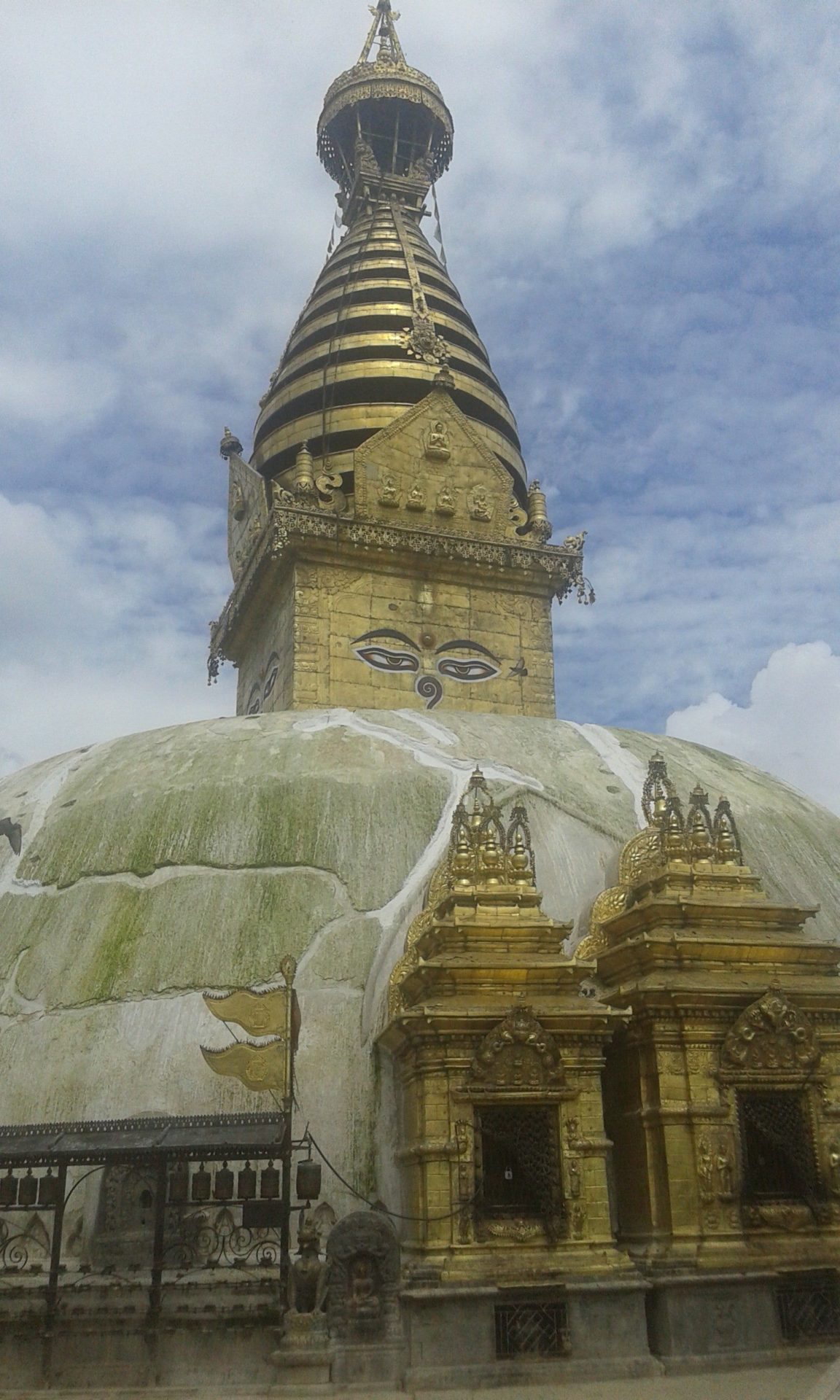
Kathmandu 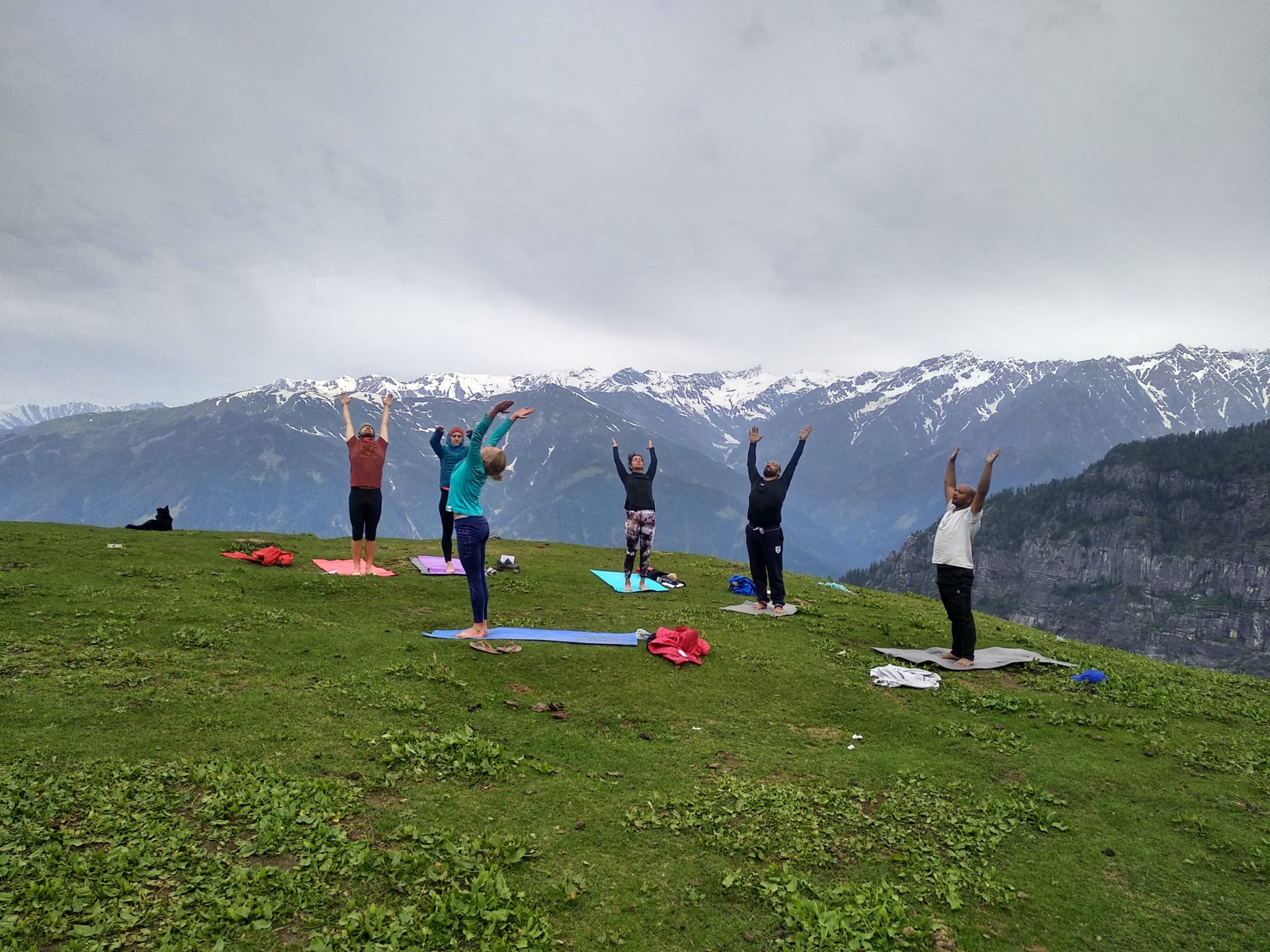
Yoga Trek 
Yoga Trek 
Hike 
Yoga 
Monastery 
Monastery 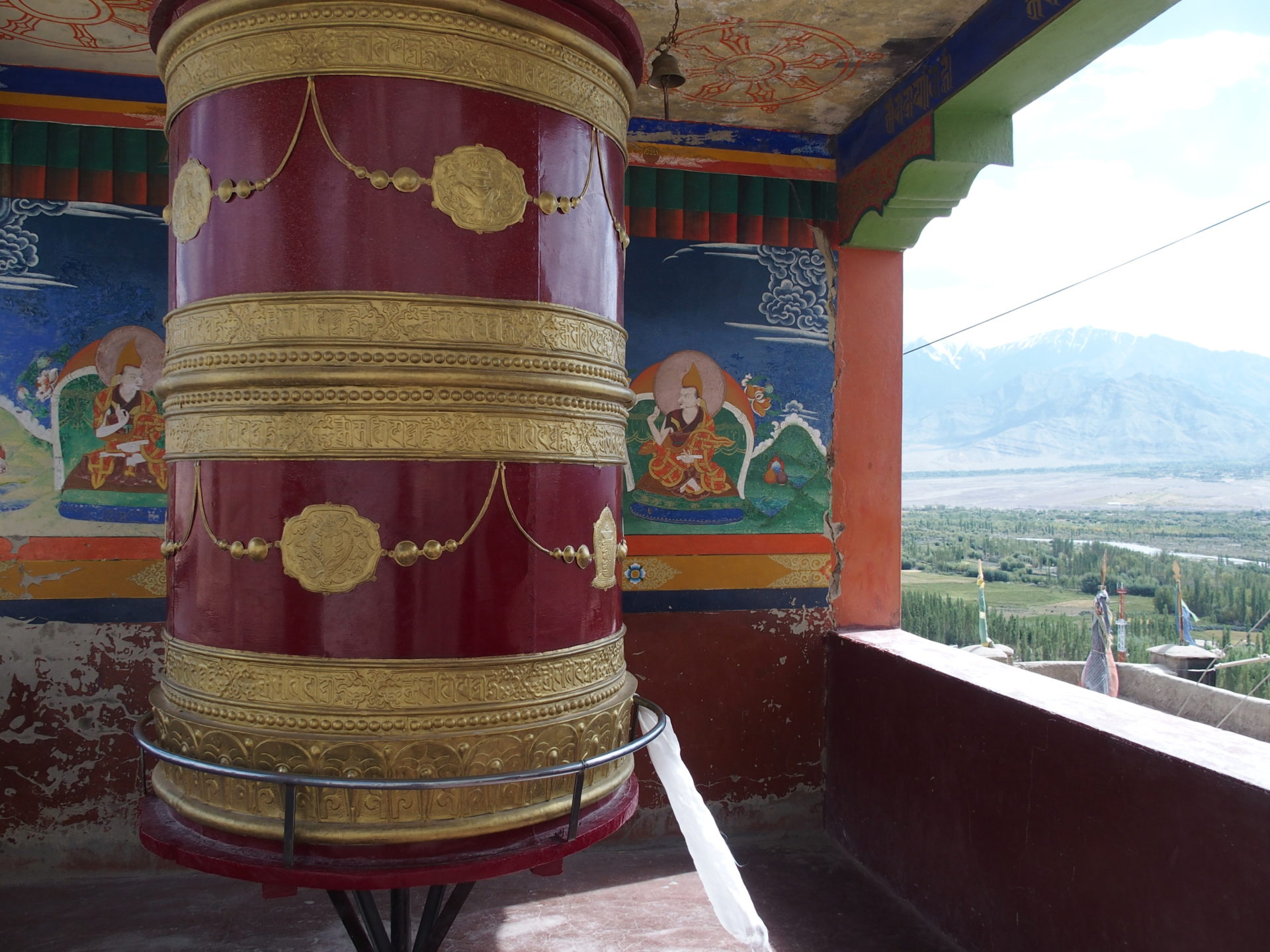
Monastery 
Monastery
Prices and Dates
This Nepal Yoga trip is possible October to May. Please enquirer.
from 2 participants: 2249 €
Single supplement 200 € (only for accomodation in Kathmandu and Pokhara)
Group Departures:
02.11.2024-17.11.2024
22.03.2025-06.04.2025
Tour Info
Requirements
The trek is a moderate trekking tour. A good basic physical condition for 4 to 7 hours of hiking a day with uphill and downhill passages should be doable. For the yoga classes, each level is welcome. The yoga classes are adapted to the needs of the group and are a combination of Asana practice, pranayama, yoga philosophy, relaxation techniques and meditation.
Further Information
16 Days Yoga Tour
- Trekking medium
- Lodge Trek: 7 days full board
- Kathmandu: 2 nights
- Pokhara: 2 nights/breakfast
- Kathamndu Valley 5 nights full board
- Maximum height: 4,440 meters
- Best times to visit: from September to May
- Click here to go to the packing list (please take a sleeping bag along as well)
Tour guide and yoga teacher Sarah Appelt (only 8 + participants, otherwise local tour guide and yoga teacher)
Sarah had her first intensive contact with yoga during her one-year volunteer service in Delhi in 2009/10. In addition to teaching in a school in a slum, she had a private yoga teacher who taught her the secrets of traditional Indian yoga. During this time Sarah not only found her own regular practice, but yoga also became an integral part of her life.
When she returned to India in 2012, she found her new private yoga teacher in the Indian mountain resort of Manali, with whom she completed the snowy winter over an intense month-long yoga workout at Shivananda Yoga.
In the following winter of 2013, she completed her first 200 hours of yoga teacher training in Goa with the well-known Ashtanga and Hatha Yoga teacher Vijay from Universal Yoga.
In the fall of 2015, Sarah completed her 300 hours of yoga teacher training at the Paramand Yoga Institute in Indore, a city in central India. Here she trained mainly in yoga therapy, traditional Hatha yoga and meditation.
She continued to teach yoga in Manali and also offered yoga trips and retreats throughout India. Whenever she traveled to Germany again, she taught as a guest teacher at various yoga schools.
In 2016, Sarah attended a ten-day Buddhist silence and meditation seminar at the Tushita Center in Daramshala.
She completed her certification in Thai yoga massage in March 2017 in Dharamshala.
In autumn 2017, she completed another 300 hours of certified yoga teacher training in Akhanda Yoga style in an ashram in Rishikesh.
She received her training in singing bowl therapy and mantra meditation in Goa in March 2019 from Shiva Girish.
2020 she did a training in Asthanga and Yin Yoga.
Meanwhile, Sarah is a very experienced 1000-hour certified yoga teacher with her own deep yoga practice. It offers yoga trips and retreats throughout India throughout the year.
Entry regulations and trekking permits
A passport valid for at least half a year and a tourist visa is required to enter Nepal. Visas can be applied for at the Nepalese embassy before the trip, but are also available directly upon arrival at the airport in Kathmandu. All you have to do is fill out an application form and pay a fee. The amount depends on the planned duration of the stay and the number of entries and departures into the country. It also makes sense if you bring a larger number of passport images. Although photos can also be taken in the airport in a suitable size, you will need them anyway for the trekking permits. These are required in all areas not listed in the visa itself. You will receive the trekking permits at the immigration office in Kathmandu. The fee also depends on the length of stay and the respective area. You should not try to get on the road without the right permits, as there are numerous controls in Nepal and the penalties are quite high.
Travel time
The best travel times for Nepal are the months from March to June and from September to November. During this time, the weather is usually dry and mild. The most beautiful is in autumn after the monsoon, as the air is particularly clear during this time. This is especially important if you not only want to hike, but also take impressive photos. Even in winter, the sky is often bright blue, but since the temperatures at this time of year are often below freezing and many passes are closed, only very experienced travelers should explore the country. The monsoon season in summer is rather unsuitable for trekking due to the heat and humidity.
Hygiene and health
As in most Asian countries, Nepal is not expected to have a European standard of cleanliness. You should therefore follow the usual precautions and only eat thoroughly cooked food. You should avoid raw fruit and wash your hands as thoroughly as possible before eating to reduce the risk of transmission. Water should always be boiled not only for drinking, but also for brushing your teeth, otherwise you can become infected with worms and various intestinal diseases. Vaccinations are not mandatory for Nepal, but can be meaningful individually. It is best to get advice from your doctor before travelling.
Accommodation
During the trek
Even away from the capital, the network of paths in Nepal is very well developed. At regular intervals, tea houses can be found along these paths, often with attached accommodation. So you don’t necessarily have to spend the night in the wild while trekking. Since the rooms are usually not heated and bed linen is usually not provided, a sleeping bag is necessary even if you want to be accommodated exclusively in tea houses. However, hotels or guest houses in the true sense of the term are rarely found. Camping, on the other hand, is possible almost all over the country and is subject to hardly any restrictions.
During the trek you usually sleep in typical lodges, also called Guesthouse or Teehouse. Lodges are comparable in function to mountain huts in the Alps. Many suppliers often speak of “strictly tested” or of “high quality standards”. Let us not fool ourselves. Lodges are simple accommodations run by their Nepalese families. Many are really very cute, others have an unbeatable view or maybe cook a good Dal Bhat.
They all have one thing in common: a lodge offers you a good place to eat and sleep.
Lodges are very simple and their construction is mostly similar. There is always a large food/common room, in the middle of which there is usually an oven. In the colder regions, of course, the most popular places are those around this oven. In these colorful oven rounds, consisting of Nepalis and trekkers from all over the world, you can make many contacts. Lodges have their very own and really interesting atmosphere.
The individual rooms are always next to th common room. The rooms are almost always furnished the same. The facility consists of two beds. In the easily accessible or lower regions there is usually also electricity in the room. A private bathroom or shower in the room are rather rare, or only available in the main trekking areas such as in the Annapurna region from time to time.
Basically, it can be said that the higher or further away, the more simple the accommodation and for the overnight stay in a lodge a sleeping bag is recommended everywhere.
In Kathmandu
In Kathmandu we stay in the quiet Rajra Hotel.
During the Monastery Retreats
For three days we stay at The Neydo Tashi Choeling Monastery Guest House.
Meals
During the trek you usually eat in the lodges. There is very simple but really good food. Some lodges have a reputation for certain things that are cooked particularly well there. Just ask our guides if you have an appetite for certain things.
Much is cooked with rice, pasta and potatoes. Most of the time there is also nice vegetables from the garden.
For allergy sufferers, eating during the trek is a real cure!
- Staples simply cooked well.
- Gluten, giadin, lactose poor or free food
Ps.
If you are allergic, you know best what gets you well. In case of doubt, you must of course ask before eating or inform your cook at tent camps.
People who suffer from lactose or gluten intolleranzen always report positively to us about the food and its tolerability during the trek.
During our monastery retreat there are healthy vegetarian Nepalese meals.
Responsible trekking
Even in areas that are off the beaten track, pollution is now a major problem. Therefore, make sure to pack your garbage again after a rest and take it with you. Along all routes, there are always opportunities to dispose of waste of all kinds. However, you should avoid disposable packaging if possible, as the country is overwhelmed with the amount of waste generated. In addition, you should only explore Nepal with all the necessary permits and officially licensed guides, as the proceeds directly benefit the preservation of the national parks and the necessary infrastructure.
Equipment and supplies
The equipment you need depends, of course, on the travel time and the area you want to explore. The most important thing is good and suitable footwear as well as clothing adapted to the climate in sufficient numbers. A sturdy and spacious backpack and a warm sleeping bag are also included in the basic equipment. In Kathmandu, however, you can still make additional purchases without any problems, as many shops specialize in trekking travelers. You can also buy everyday items such as soap and toilet paper as well as food on site. Only on more remote routes can it be useful to take larger supplies with you.
Travel pharmacy
On the other hand, a good travel pharmacy is indispensable, which you should have with you at the time of your arrival. In any case, it includes:
- Disinfectant
- Bandages
- Insect repellent
- Sunscreen
- Cold sea
- Painkillers
- Broadband antibiotics
- Means against diarrhea
- Water disinfection tablets
Your doctor can also give you other recommendations that are tailored to your personal constitution and medical history.
Your day backpack
In a typical day pack there are usually the following things:
- Drinking bottle(s)
- Handkerchiefs (toilet)
- Camera
- Load of biscuits for the little hunger
- A fleece in case it gets cold
- If rain is to be expected, a light rain jacket
- Small first aid
Always carry along:
- Your passport
Trekking equipment up to 3,500 meters
- (*) Backpack (day backpack)
- (*) Shirts
- Underpants
- (*) Two outdoor pants
- (*) Shorts
- Two to three pairs of trekking socks
- (*) Lightweight fleece jacket
- (*) Thick fleece jacket
- (*) Rain-repellent jacket with hood
- Solid pair of trekking shoes
- (*) A pair of flip-flops / bath flaps
- (*) Umbrella cap (Cappy) recommended
- Towel
- (*) Telescopic poles (who likes it)
- Body care/culture bag
- Lip care pencil
- Sunscreen Factor 50
- Sunglasses
- Detergent in the tube
- LED headlamp
- Reserve batteries
- Alu or plastic drinking bottle (can also be used as a hot water bottle at night)
- Sleeping bag comfort area at +-0 zero degrees and lodgetrekk
- Isomatte (only for tent trek)
- 2 meters cord + 6 clothespins
- Sufficient speed handkerchiefs (toilet)
- Plastic bags for order in the backpack (dirty laundry)
- Plastic bag with Zipplock (resealable)
- Who likes to drink his own tea, tea bags
- Pharmacy
(*) Can be purchased anywhere well in Nepal.
Don’t save on the socks
Fluffy and matching trekking socks are a very important item of equipment. In most cases, false socks are to blame for blisters and sore feet.
Multifunctional Laundry (MFW):
MFW has the advantage that it dries very quickly and dissipates moisture well.
It also has a small pack size. You can wash them out after the trek and put them back on the next day.
Disadvantage:
MFW is expensive and if you don’t own any, normal T-shirts, U-pants are completely sufficient. Just take a few more with you.
Don’t save at the sleeping bag!
If you sleep well at night, you have something from the next day!
Tip
Very useful is a multifunctional towel.
Trekking equipment up to 5,500 meters
Based on trekking up to 3,500 meters
- Long underpants
- (*) Warm hat
- (*) Scarf
- (*) Gloves
- Sunglasses sideways opaque (snow blindness)
- Sleeping bag comfort area at -10 degrees Lodgetrekk and at least -15 degrees at tent trek
- Pharmacy incl. Ams
(*) Can be purchased anywhere well in Nepal.
Recommended vaccinations
A trip to Nepal does not require any special vaccinations. However, you should consult your GP in good time (as with any holiday) about three months in advance, unless you are sure about the condition of your vaccination protection.
The following standard vaccinations should be available:
- Diphtheria
- Hepatitis A
- hepatitis B only risk groups or long-term travellers.
- Polio
- Tetanus
The trekking pharmacy
There are no pharmacies on the Trek or in the hinterland.
Most of the time you take everything for free. But – if something happens, you are happy to have a good pharmacy with you.
Our mountain guides are equipped with the most important. But you shouldn’t experiment with your own health.
It’s enough for someone from your group to take over this job. Not everyone needs the complete list.
Our recommendation:
- Painkillers
ibuprofen 600 mg. No blood thinners like aspirin. In case of injuries, the bleeding stops worse! Furthermore, ibuprofen also has an anti-inflammatory effect. - Imodium/coal tablets
- Sore throat tablets
- Remedy for abdominal pain/nausea
- Sports algae such as Diclofenac, MobilatGel etc. (high doses)
- Antibiotics (helpful but not a must)
-Amoxicillin 1000 mg in tonsils, lungs, sore throats or severe colds
-Metronidazole in margins/intestinal tract, amoeba, extreme diarrhoea
-Ciprofloxacin as a broad-spectrum antibiotic in all other inflammations. - Disinfectant or iodine ointment
- Dressings, staples, bubble patches
- Association scissors
- Sterile disposable gloves
- First aid blanket (silver foil)
Some of these medications are prescription-only and only taken as directed by the doctor. In addition to the areas of application and the dosage of the individual medications, please consult your FAMILY doctor beforehand.
He will explain exactly what to consider when administration.
Acute Mountain Sickness, altitude sickness
“AAcute Mountain Sickness” does not have to be sick.
As the altitude increases, the air pressure decreases and thus also the oxygen content per cubic meter of air. At an altitude of 5,000 metres, there is only half as much oxygen in the air as at sea level.
The most important zones are:
- 0 -3,000 meters: Generally problem-free zone.
- 3,000 – 5,100 meters: Altitude problems may occur, complete acclimatization possible.
- 5,100 – 7500 meters: Only incomplete acclimatization possible. Continued decline in forces.
- over 7,500 meters: Death zone. The body consumes itself. Only short stay possible.
AMS is often the result of carelessness and misbehavior. Every body can get used to very high altitudes. You just have to give him enough time and rest.
What is AMS
Customer Hospital posted this notice near Namche Bazaar.
Acute Mountain Sickness occurs as a result of poor acclimatization of the body to the height. It can no longer absorb enough oxygen from the air and be fed to the organism.
AMS can occur at altitudes above 3,000 meters. Most often, the condition deteriorates overnight while sleeping and the following day the typical symptoms occur:
exhaustion, severe headache in the neck area, dizziness, hallucinations, lack of sleep and appetite, vomiting, dry cough with ejection, blue lips, discolored nail beds
Ignoring the symptoms can be life-threatening.
Possible consequences:
- Hape
Occurrence: 1-3%
High lung edema. Water accumulation in the lungs. Water is pressed into the lungs by high blood pressure. - Hace
Occurrence: 1%
Altitude brain edema. Swelling of brain mass due to accumulation of fluid and dead brain cells. Rather rare. At altitudes above 3,500 meters possible, usually only from 5,000 meters.
How do I recognize AMS?
It is not easy to differentiate the beginning of AMS.
There is no point in panicking at every sign of headache or loss of appetite.
Nor is there any point in constantly trekking with fear of AMS.
- 80 percent of all climbers complain of headaches from time to time.
- It is normal to feel exhausted or uncomfortable in the stomach after a hard day with many ascents and descents.
- It can always happen that the stomach rebels due to unusual eating and drinking behavior.
- It is also normal that your performance decreases with increasing height, your resting pulse rises and you breathe much faster than on a beach holiday.
All this is normal.
But with all this you feel good and at the latest the next morning you can get started again.
AMS is best noticed, as you know yourself best. You should not hide it if your well-being deteriorates permanently over two days.
False greed according to the motto: “I’m fit, this will happen again” can end in life-threatening. Share your problems and talk about them with the group and the guide.
How do I avoid AMS?
There are a few simple rules.
- Do not ascend too fast (max. 300-500 meters per day).
- Avoid overexertion. Slow, slow is the trick
- Every 1,000 meters of altitude an additional rest day.
- Always drink a lot (no alcohol).
- Any serious disturbance is AMS unless something else has been clearly identified.
- Only continue to rise symptom-free.
Our tours are strictly planned according to these criteria.
Our mountain guides are trained in the recognition and handling of AMS.
What to do at AMS?
There is only one answer
- Descend
Immediately descend to the height, where the sick man was well for the last time.
The symptoms will subside immediately there. Overnight at this altitude and try the ascent slowly after a day or two (if the sufferer feels thereafter).
The continuation of the ascent usually leads to the worsening of the condition at the latest at the next overnight stay.
Diamox as a prophylaxis ?
Diamox (acetazolamide) reduces the internal pressure of the vessel, e.g. for treatment with too high internal pressure. The opinions of the world of specialists and doctors are sometimes different. While in the USA all doctors prescribe Diamox prophylactically during high mountain tours, in Europe this is dispensed with. There are long-term studies conducted in the Everest region in 2008. In short, Diamox helps to adjust to height. So far, I think everyone agrees.
Our experience and recommendation with Diamox is as follows:
- If no altitude sickness is known so far, do not take Diamox to get to know your own limits.
- If altitude sickness has occurred earlier, take acetazolamide from 500 meters below the last occurrence. 250mg in the morning and at noon.
- Drink a lot
When compromising your travel pharmacy, please contact your GP for this article.
How many rupees?
With the credit card you can pay very well in Kathmandu and Pokhara.
- The official means of payment in Nepal is the Nepalese Rupee (NPR).
- In recent years, the rule of thumb 100 NRP has been around 1 euro.
- You can find the current conversion rate here
What do I take with me ?
Our recommendation is as follows:
- Your debit card with secret number
- A credit card
- A little euro cash in case of need (250.00 Euro)
Get money
Tip: Nabil-Bank (green-white logo) – withdrawal up to 30,000,00 rupies possible!
In big cities like Kathmandu, you get money everywhere with your debit card + secret number (as in Germany). It should be noted that many banks only allow withdrawals every 24h to 100.00 euros. This is not enough for the holiday fund. An exception is the Nabil Bank, which allows withdrawals up to just under EUR 300.00.
The courses at ATM machines are currently good and up-to-date. Lift off “sufficient” than several times little. In most cases, the banks charge you a minimum fee per withdrawal. This is about 5.00 euros.
Whether the ATM gives you money with your debit card, you can tell by the fact that a MAESTRO sticker is attached.
If you have a credit card such as Mastercard, Visa etc. with secret number, you can also use it for cash withdrawals at the ATM. About the fees for cash withdrawals with an EC or credit card, ask a banker of your trust beforehand ?
Euro cash can always be exchanged at various exchange offices. Again, the fee is usually higher than for the ATM with debit card. You can compare when you’re there.
Note on credit and debit cards
In any case, we recommend that you check with your bank before leaving if your card is activated abroad (not Europe) and what the limit for cash withdrawals is.
Take money back
Running NPR is not allowed.
It also does not exchange you a bank in Germany.
Either you spend everything in Nepal or exchange it back in Nepal in Euros.
Money trekking
In the hinterland there is hardly any possibility to get fresh money. You should take enough money with you in advance, e.g. from Kathmandu. Cash like euros can also be exchanged in the mountains, but the price is usually not so sparkling.
Our experience is that you spend almost no money on the trek. Our tours are incl. three meals a day + overnight free. All you need is money for:
- Coke, water, fanta, etc.
- Candy
- Possibly a small errand (stamps and the like)
As a guideline, you can say that 15,00 to 20,00 Euro per day and nose are enough on our tours. If there is something left afterwards, it can be spent wonderfully in e.g. in Kathmandu or Pokhara.
You should also take a reserve as emergency money in euros.
Negotiate
When shopping in Nepal, it should always be well negotiated beforehand.
As in almost all countries, prices in Nepal are not fixed.
It is recommended never to accept the first prize. The exception is: supermarkets, restaurants and everything official.
With all other offers you should always negotiate.
Nepal is a country of extremes
Every trip in Nepal is a little adventure. For this reason, we are making some demands on you. Please read the following text first.
Tour programs
Due to adverse circumstances – e.g. closures of sightseeing objects, holidays, bad weather, the health of the participants or unfavourable conditions during trekking, etc., route changes, program changes or delays may occur.
Of course, we and your tour guide will always strive to reach all program items to your full satisfaction. However, we cannot guarantee that our tenders will be adhered to accurately. We ask for your understanding.
Construction
In Kathmandu, especially in the district of Thamel, construction is always underway. Construction site noise and disturbances in the cityscape are the order of the day. Since the local planning is quite spontaneous, we cannot guarantee that the hotels we have booked will not be affected.
Please inform yourself about your destination and what to expect on the spot before travelling.
During the Treks
Trekking in Nepal should always require a certain physical fitness and a good state of health. We also expect:
- Independent and self-responsible action even in extreme situations.
- Comradely behaviour.
- Tolerance and helpfulness towards the group and the Nepalese team.
You should be able to walk independently and safely over difficult terrain, e.g. boulders, moraine debris, glaciers covered with debris and ice, even in bad weather.
In addition, the tour guide is authorized to send participants back if their behaviour threatens the community or even the company itself or if they are not able to cope with the demands psychologically or physically.
